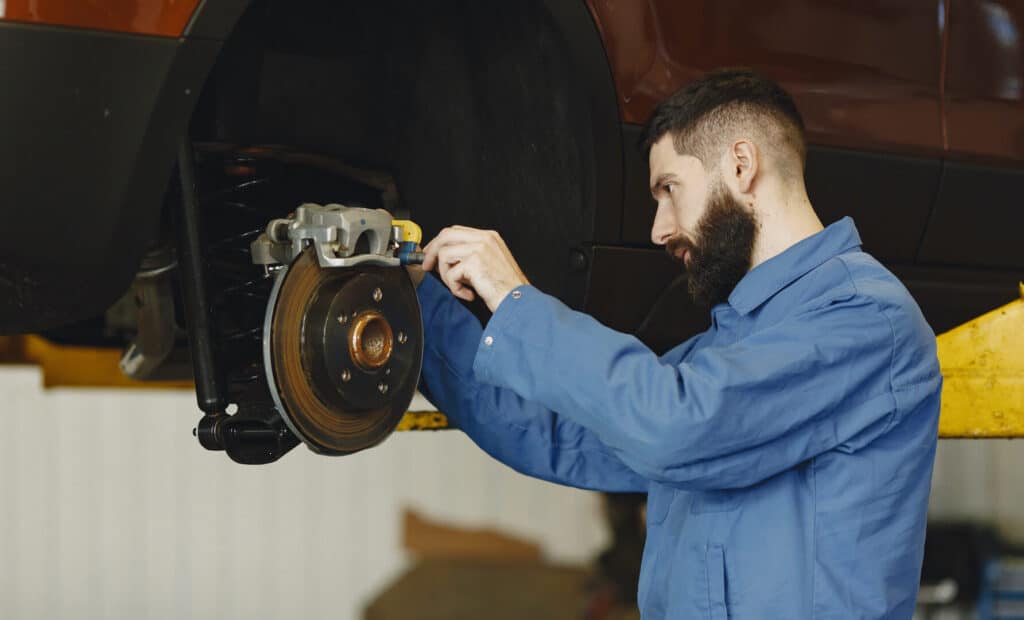Introduction: Understanding the Link Between Brake Health and Driver Safety
The importance of a well-maintained brake system cannot be overstated, particularly when it comes to the safety of fleet drivers. Brake system health directly impacts a vehicle’s ability to stop effectively and avoid accidents. This article explores the connection between brake system health and driver safety, highlighting the importance of regular maintenance, driver training, and proactive fleet management in ensuring a safe and efficient fleet.
Brake System Performance: How Well-Maintained Brakes Enhance Road Safety
A properly functioning brake system is crucial for road safety. Well-maintained brakes provide drivers with the necessary stopping power to react to sudden obstacles, avoid collisions, and maneuver in hazardous driving conditions. Regular maintenance ensures that brake components operate at peak efficiency, reducing stopping distances and minimizing the risk of accidents.
Brake Failure: The Potential Consequences of Neglected Brake Maintenance
Neglecting brake maintenance can have severe consequences. Brake failure due to worn or damaged components can lead to catastrophic accidents, resulting in injuries, fatalities, and significant financial losses. Regular inspections and timely repairs help prevent brake failure by identifying and addressing potential issues before they become critical problems.

Fleet Driver Training: Educating Drivers on the Importance of Brake System Health
Driver training plays a vital role in promoting brake system health and fleet safety. By educating drivers on proper braking techniques, the importance of regular maintenance, and how to identify potential brake issues, fleet managers can empower their drivers to contribute to overall fleet safety. Providing ongoing training and resources ensures that drivers stay informed and engaged in maintaining brake system health.
Recognizing Brake System Warning Signs: Empowering Drivers to Identify Issues Early
It is essential for drivers to recognize the warning signs of potential brake problems. Unusual noises, reduced braking performance, and dashboard warning lights can all indicate brake system issues. Empowering drivers to identify these signs and report them promptly allows for timely repairs, preventing more severe problems and reducing the risk of accidents.
The Role of Advanced Brake Technologies: How ABS, ESC, and Brake Assist Improve Safety
Advanced braking technologies, including anti-lock braking systems (ABS), electronic stability control (ESC), and brake assist, play a crucial role in improving vehicle safety. Working alongside well-maintained brakes, these systems contribute to better overall braking performance, assisting drivers in managing challenging situations and reducing the likelihood of accidents.
ABS prevents wheel lock-up during hard braking, allowing drivers to maintain steering control, while ESC helps stabilize the vehicle during sudden maneuvers or on slippery surfaces. Brake assist detects emergency braking situations and increases braking force, ensuring maximum stopping power when needed. Collectively, these advanced technologies provide drivers with added safety and control, further emphasizing the importance of maintaining optimal brake system health.
By incorporating these advanced braking technologies in fleet vehicles and maintaining them properly, fleet managers can enhance overall safety and reduce the risk of accidents. This, in turn, contributes to a safer and more efficient fleet operation, ultimately benefiting both drivers and the organization as a whole.
Fleet Vehicle Inspections: Ensuring Brake Systems are Up to Standard
Regular fleet vehicle inspections play a crucial role in maintaining brake system health. Thorough inspections by trained technicians help identify worn or damaged components, ensuring that brake systems are up to standard and functioning safely. Adhering to a strict inspection schedule helps fleet managers stay proactive and maintain a safe, efficient fleet.
Regular Brake Maintenance: A Proactive Approach to Fleet Safety
Scheduling regular brake maintenance is a key aspect of proactive fleet safety. Regular maintenance, including replacing worn brake pads and rotors, ensures optimal braking performance, reduces the risk of accidents, and minimizes vehicle downtime. A well-maintained brake system also contributes to better fuel efficiency, reducing operating costs and improving fleet sustainability.
Minimizing Downtime: How Timely Brake Maintenance Reduces Vehicle Off-Road Time
Timely brake maintenance helps minimize vehicle downtime and keep the fleet on the road. By addressing brake system issues early, fleet managers can avoid more extensive repairs and prevent costly, unexpected off-road time. A proactive approach to brake maintenance not only enhances safety but also improves fleet efficiency and productivity.

Compliance and Legal Considerations: Meeting Brake Safety Regulations for Fleet Vehicles
Meeting industry regulations and legal requirements is essential for maintaining a safe and compliant fleet. Regular brake maintenance and inspections ensure that vehicles meet safety standards, reducing the likelihood of fines, penalties, or legal liabilities arising from non-compliance. Staying up-to-date on regulatory changes and ensuring that maintenance procedures align with these requirements is crucial for fleet managers to protect their organizations from potential legal issues.
The Financial Impact: Weighing the Costs of Brake Maintenance Against Accident Risks
While brake maintenance can be a significant expense for fleet operators, the financial impact of accidents resulting from poor brake system health can be far more severe. Accidents can lead to costly repairs, increased insurance premiums, lost productivity, and potential legal liabilities. By investing in regular brake maintenance, fleet managers can mitigate these risks and protect their organization’s bottom line.
Conclusion: Prioritize Brake System Health for a Safer Fleet and Reduced Liabilities
The connection between brake system health and fleet driver safety is undeniable. By prioritizing regular brake maintenance, driver training, and proactive fleet management, fleet operators can reduce the risk of accidents, minimize downtime, and ensure compliance with industry regulations. A well-maintained brake system is an essential component of a safe, efficient, and profitable fleet, protecting both drivers and the organization’s financial interests.
